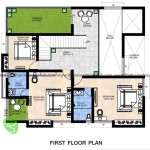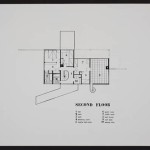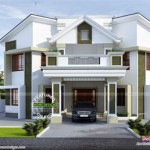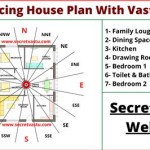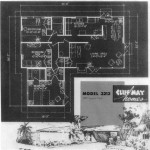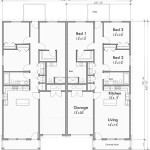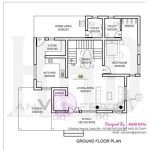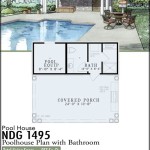Contemporary Inverted House Plans Free Printables
The contemporary architectural landscape is continually evolving, pushing the boundaries of conventional design and functionality. Among these trends, the inverted house plan has emerged as a compelling concept, challenging traditional notions of space utilization and aesthetic appeal. These atypical designs, characterized by placing living areas on the upper floors and bedrooms on the lower levels, offer unique advantages in terms of light, views, and privacy. The increasing availability of free printable plans for such designs makes exploring this architectural style more accessible to a wider audience. This article delves into the key aspects of contemporary inverted house plans, focusing on the benefits, design considerations, and the resources available for obtaining free printable versions.
An inverted house plan fundamentally reverses the conventional layout. Traditionally, the ground floor houses the primary living spaces such as the living room, kitchen, and dining area, with bedrooms typically situated on the upper floors. In an inverted design, the main living areas are elevated to the upper levels, capitalizing on potential views, increased natural light, and enhanced privacy. This shift presents a novel approach to residential architecture, requiring careful consideration of structural elements, circulation patterns, and functional zoning.
The appeal of inverted house plans is multifaceted. For homeowners seeking to maximize natural light and panoramic views, situating the living room and kitchen on the upper floor can be particularly advantageous. This arrangement often provides unobstructed vistas, especially in locations with scenic landscapes or urban skylines. Furthermore, the elevation of common areas can create a sense of separation from street-level noise and activity, enhancing the overall privacy and tranquility of the living space. Inverted plans can also be beneficial in areas prone to flooding, as they elevate the critical living spaces above potential water levels.
Key Benefits of Inverted House Plans
One of the primary advantages of an inverted house plan is the optimization of natural light. By positioning the living areas on the upper floors, these spaces receive more direct sunlight throughout the day. This can significantly reduce the need for artificial lighting, leading to energy savings and a more vibrant and inviting interior atmosphere. The increased natural light can also have positive psychological effects, promoting a sense of well-being and enhancing the overall living experience.
Beyond natural light, the elevated position of the living areas often provides enhanced panoramic views. Whether it's a sweeping landscape, a bustling cityscape, or a serene ocean vista, the higher vantage point allows residents to fully appreciate their surroundings. This is particularly valuable in areas with desirable views, where an inverted design can maximize the visual connection between the interior and exterior environments. Large windows and balconies can further enhance this connection, creating a seamless transition between indoor and outdoor living.
Another significant benefit of inverted house plans is the potential for increased privacy. By placing the bedrooms on the lower levels, these spaces are buffered from street noise and pedestrian traffic. This can create a more peaceful and private environment for sleeping and relaxation. Additionally, the elevated living areas provide a greater sense of separation from the outside world, allowing residents to enjoy their leisure time without feeling exposed. This aspect is particularly appealing in densely populated urban areas or locations with high levels of activity.
Design Considerations for Inverted House Plans
Designing an inverted house plan requires careful attention to several key factors, including structural integrity, accessibility, and functional flow. The structural support system must be robust enough to accommodate the weight of the elevated living areas, while also ensuring stability and safety. This often involves the use of reinforced concrete, steel beams, or other advanced structural materials. The design must also comply with all relevant building codes and regulations, ensuring that the structure is safe and sound.
Accessibility is another crucial consideration in inverted house plans. Stairs are typically required to access the upper-level living areas, which can pose challenges for individuals with mobility issues or those who prefer single-level living. To address these concerns, designers may incorporate elevators or ramps into the design. Alternatively, the layout can be modified to accommodate a ground-floor suite with essential living amenities, ensuring that the house is accessible to all residents.
The functional flow of an inverted house plan is also essential for creating a comfortable and efficient living environment. The layout should be designed to minimize unnecessary travel between levels, and the placement of rooms should be carefully considered to optimize functionality and convenience. For example, the kitchen should be located close to the dining area to facilitate meal preparation and serving. Similarly, the living room should be positioned to take full advantage of the available views and natural light.
Finding Free Printable Plans and Resources
The availability of free printable plans for contemporary inverted house designs has democratized the exploration of this architectural style. Several online resources offer a variety of plans that can be downloaded and printed for free. These plans typically include detailed floor plans, elevations, and sections, providing a comprehensive overview of the design. However, it is crucial to note that free plans may not always be complete or fully customized to individual needs. They often serve as a starting point for further development and modification by a qualified architect or designer.
When searching for free printable plans, it is essential to verify the source's credibility and the plan's accuracy. Look for reputable websites or organizations that specialize in architectural design and offer a range of resources for homeowners. It is also advisable to review the plans carefully to ensure that they meet all relevant building codes and regulations in the specific location. Consulting with a professional architect or engineer is highly recommended to ensure that the plans are structurally sound and compliant with all applicable requirements.
In addition to free printable plans, other valuable resources are available for those interested in inverted house designs. Online forums and communities provide a platform for homeowners and designers to share ideas, ask questions, and exchange information. These forums can be a valuable source of inspiration and practical advice. Architectural magazines and websites also feature articles and case studies showcasing innovative inverted house designs, highlighting the latest trends and design techniques. Local building departments and architectural firms can also provide guidance and support throughout the design and construction process.
The exploration and utilization of free printable plans should be approached with caution and diligence to ensure the realization of a safe and functional living space. While these free resources offer a cost-effective entry point into the world of inverted house designs, they often require adaptation and refinement by qualified professionals.
Structural integrity is a paramount concern when using any prefabricated or freely available house plan. Inverted house plans, by their very nature, present unique structural challenges due to the unconventional distribution of weight and load-bearing elements. Soil conditions, climate, and local building codes can further impact the structural requirements. A qualified structural engineer should thoroughly analyze the free printable plan and customize it to suit the specific site conditions and regulatory framework. This may involve reinforcing foundation elements, modifying wall thicknesses, or incorporating additional structural supports.
Compliance with local building codes is another essential consideration. Building codes dictate minimum standards for safety, health, and energy efficiency. Free printable plans may not always be fully compliant with the codes in a specific geographic area. An architect or building code consultant should carefully review the plans to ensure they meet all applicable requirements. This may involve modifications to insulation levels, window types, ventilation systems, and other building components.
Furthermore, personalization and customization of free printable plans are often necessary to align the design with the homeowner's individual needs and preferences. Room sizes, layouts, and finishes can be modified to create a living space that is tailored to the user's specific requirements. This customization process may involve significant changes to the original plan, requiring the expertise of an architect or interior designer. Even seemingly minor modifications can have a significant impact on the overall design and functionality of the house.
The increasing prevalence of free printable plans for contemporary inverted house designs represents a significant opportunity for homeowners and design enthusiasts. By carefully considering the benefits, design challenges, and available resources, individuals can explore this innovative architectural style and create a unique and personalized living space. However, it is essential to approach free resources with a critical eye and seek professional guidance to ensure the safety, functionality, and compliance of the final design. A collaborative effort involving architects, engineers, and building professionals is crucial for transforming a free printable plan into a structurally sound, code-compliant, and aesthetically pleasing inverted house.

The Contemporist Sloping Lot Modern Style House Plan 4282

Modern 1 Story Narrow House Highland Park

The Prestige 4 Bedroom Modern Style House Plan 4286

Ardross Floor Plan For Narrow Lot Home Design

The Esteem Exclusive Contemporary Style House Plan 4287

Plan 23321jd 6000 Square Foot Modern House With Main Floor In Law Suite

Luxury Contemporary Style House Plan 9089 Nautilus 2

Katheko Ranch Style House Plan Luxury

The Riesling 2 Outdoor Living Contemporary Style House Plan 10163

Modern Transitional Plan 5 153 Square Feet Bedrooms Bathrooms 963 00821

